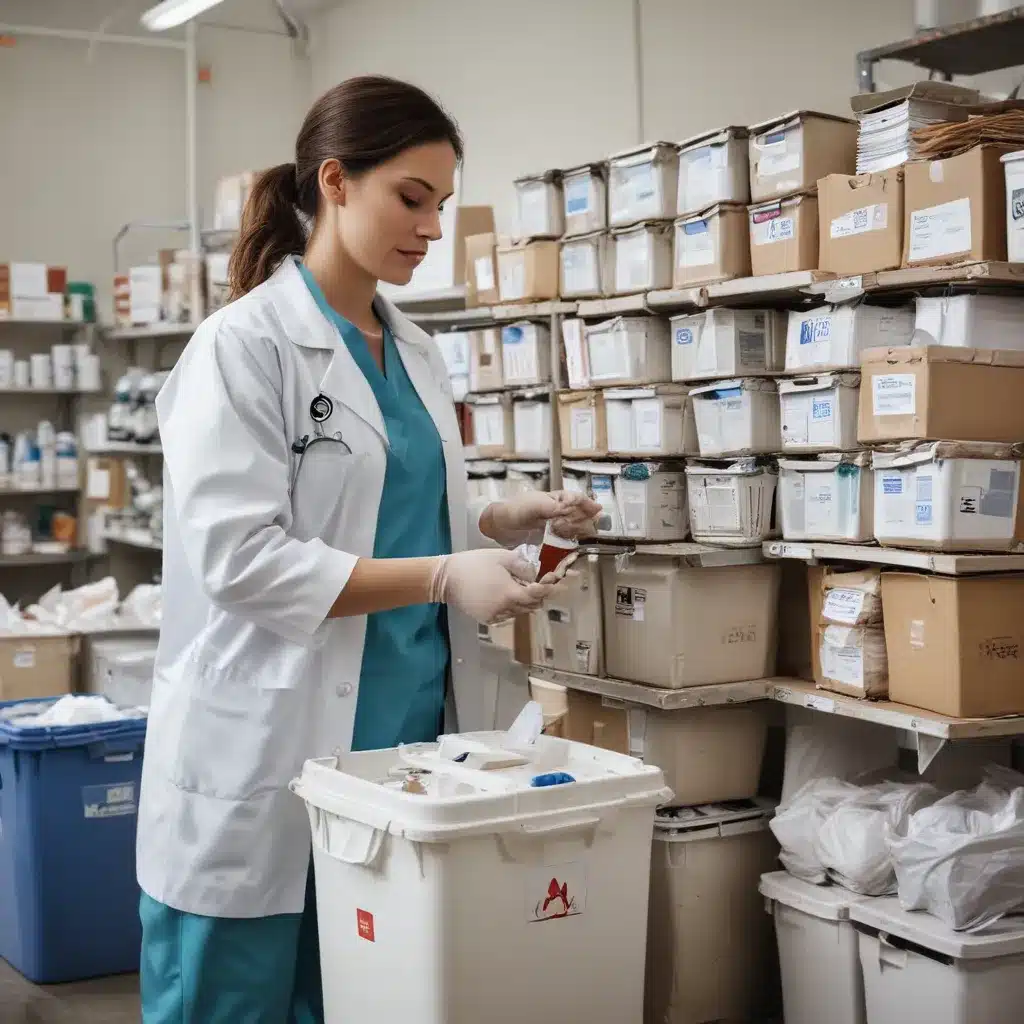Unlocking the Potential of Recycled Materials
As a cleaning service professional, I’ve seen my fair share of waste – from the mountains of discarded materials to the environmental impact it can have. But recently, I stumbled upon a fascinating story that’s got me thinking differently about how we approach medical waste.
It all started when I came across an article about a group of high school students in New Jersey who turned discarded blue surgical wrap into a stunning couture dress. The “Nightingale,” as they called it, was a stunning testament to the power of repurposing and the creativity that can bloom when we think outside the box.
The story behind this dress got me wondering – what other untapped potential lies within the medical waste stream? Could we be missing out on opportunities to reduce our environmental impact and breathe new life into materials we so often discard?
Rethinking the Blue Wrap Dilemma
As it turns out, the blue wrap that the students used for their dress is a common culprit when it comes to medical waste. According to one study, this material makes up a staggering 19% of the overall medical waste stream. And with an estimated 255 million pounds of it thrown away each year, it’s clear that we need to find more sustainable solutions.
The problem is that this polypropylene-based wrap is highly durable, meaning it can take decades to break down in landfills. And to make matters worse, the additives used in its manufacture can include toxic substances like cadmium and lead. It’s a recipe for environmental disaster.
But the story of the “Nightingale” dress shows that there’s another path forward. By donating the blue wrap to creative minds, hospitals like Hackensack University Medical Center were able to spark a whole new wave of innovation. Instead of ending up in a landfill, this material was transformed into something beautiful and meaningful.
Embracing the Circular Economy
As I delved deeper into this topic, I couldn’t help but think about the broader implications of this approach. Routeware, a company dedicated to sustainable waste management solutions, has been championing the idea of the circular economy – where waste is minimized, and materials are continually reused and repurposed.
The medical industry, with its vast quantities of discarded materials, is a prime candidate for this kind of circular thinking. Just imagine if more hospitals and healthcare facilities followed the lead of Hackensack University Medical Center, finding creative ways to breathe new life into their waste.
One study from Houston, Texas found that by implementing more robust waste reduction and recycling programs, healthcare facilities could divert up to 60% of their waste from landfills. That’s a staggering statistic, and it shows just how much potential there is to transform the medical waste landscape.
Inspiring a New Generation of Environmental Stewards
But the story of the “Nightingale” dress isn’t just about recycling and repurposing. It’s also about inspiring the next generation of environmental champions. By engaging high school students in this creative endeavor, the team at Hackensack University Medical Center was able to spark their imaginations and, hopefully, instill a deep appreciation for sustainability.
As one study from Houston points out, engaging the community and fostering a culture of sustainability is key to driving lasting change. And what better way to do that than by empowering young people to see the incredible potential in the materials we so often take for granted?
As I reflect on this inspiring story, I can’t help but feel a renewed sense of optimism about the future of medical waste management. By embracing the circular economy, unlocking the creative potential of discarded materials, and inspiring the next generation, we can truly reimagine how we approach this critical challenge.
And who knows – maybe one day, the patients at Adam Cleaning will be resting under the gentle glow of a dress made from recycled surgical wrap, a symbol of the remarkable transformation that’s possible when we open our minds to new possibilities.







